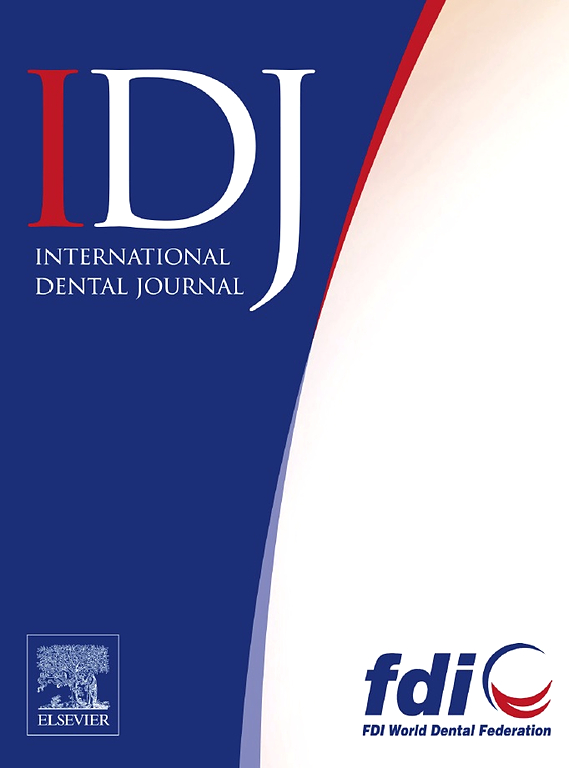不同表面处理对不同整体氧化锆与牙本质结合强度的影响
IF 3.7
3区 医学
Q1 DENTISTRY, ORAL SURGERY & MEDICINE
引用次数: 0
摘要
目的研究不同表面处理对不同钇含量(3Y和5Y)氧化锆的微观结构、形貌和剪切结合强度(SBS)的影响。材料和方法共对160个氧化锆试样进行了表面处理,包括空气颗粒磨损(APA)、氢氟酸蚀刻(HF)和热氢氟酸蚀刻(HHF),其中一半在树脂水泥粘合之前使用底漆。扫描电子显微镜和x射线衍射分析评估了表面形貌和晶相组成,而SBS使用通用试验机进行了测试。结果扫描电镜显示,每种处理的粗糙度模式不同,APA产生微保留凹槽,HF产生浅裂缝,HHF形成均匀,更深的凹槽,特别是在5Y氧化锆中。x射线衍射证实了由于处理造成的晶体改变。APA(18.11±10.02 MPa)和HHF(18.02±9.95 MPa)处理的SBS值最高(P值小于0.0001),引物处理显著提高了各组SBS值(P值小于0.0001)。5Y氧化锆的SBS(15.65±9.05 MPa)优于3Y氧化锆(13.76±8.66 MPa) (P小于0.0001)。失效模式从粘着的对照组转变为混合处理组。结论apa和HHF配合底漆是提高3Y和5Y氧化锆剪切结合强度的有效方法。需要进一步研究其在临床条件下的长期稳定性。本文章由计算机程序翻译,如有差异,请以英文原文为准。
Effect of different surface treatments on the bond strength of different monolithic zirconia with dentin
Aim
This study investigates the effects of different surface treatments on the microstructure, topography, and shear bond strength (SBS) of monolithic zirconia with varying yttria content (3Y and 5Y).
Materials and methods
A total of 160 zirconia specimens underwent surface treatments, including air-particle abrasion (APA), hydrofluoric acid etching (HF), and hot hydrofluoric acid etching (HHF), with half receiving primer application prior to resin cement bonding. Scanning electron microscopy and X-ray diffraction analyses evaluated surface morphology and crystalline phase composition, while SBS was tested using a universal testing machine.
Results
Scanning electron microscopy revealed distinct roughness patterns for each treatment, with APA producing microretentive grooves, HF creating shallow fissures, and HHF forming uniform, deeper grooves, particularly in 5Y zirconia. X-ray diffraction confirmed crystalline alterations due to treatments. SBS values were highest for APA (18.11 ± 10.02 MPa) and HHF (18.02 ± 9.95 MPa) treatments (P ˂ .0001), with primer application significantly enhancing SBS across all groups (P ˂ .0001). 5Y zirconia exhibited superior SBS (15.65 ± 9.05 MPa) compared to 3Y zirconia (13.76 ± 8.66 MPa) (P ˂ .0001). Failure modes transitioned from adhesive in controls to mixed in treated groups.
Conclusion
APA and HHF, combined with primer application, were effective methods to enhance the shear bond strength of 3Y and 5Y zirconia. Further research is needed to study their long-term stability under clinical conditions.
求助全文
通过发布文献求助,成功后即可免费获取论文全文。
去求助
来源期刊

International dental journal
医学-牙科与口腔外科
CiteScore
4.80
自引率
6.10%
发文量
159
审稿时长
63 days
期刊介绍:
The International Dental Journal features peer-reviewed, scientific articles relevant to international oral health issues, as well as practical, informative articles aimed at clinicians.
 求助内容:
求助内容: 应助结果提醒方式:
应助结果提醒方式:


